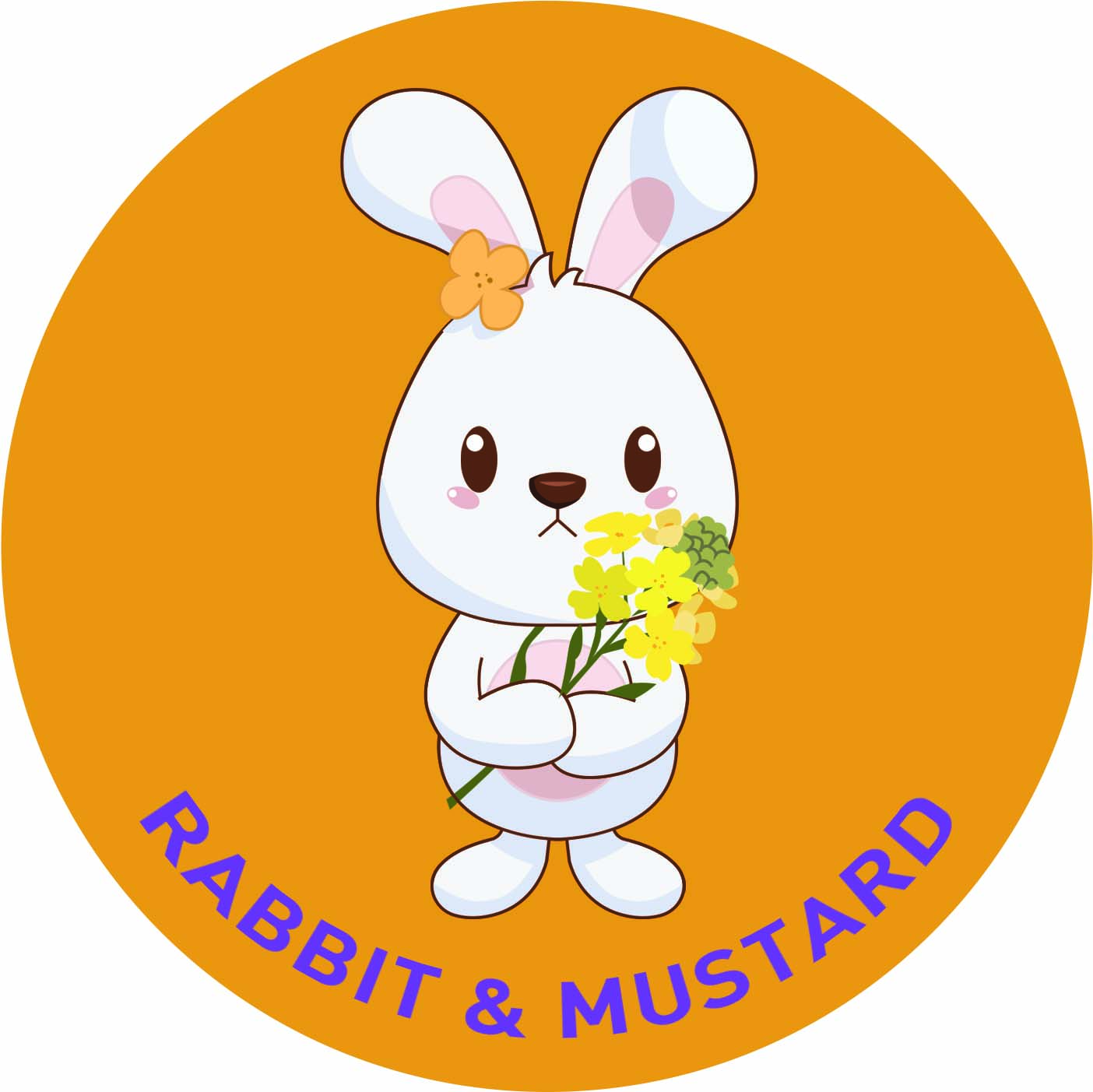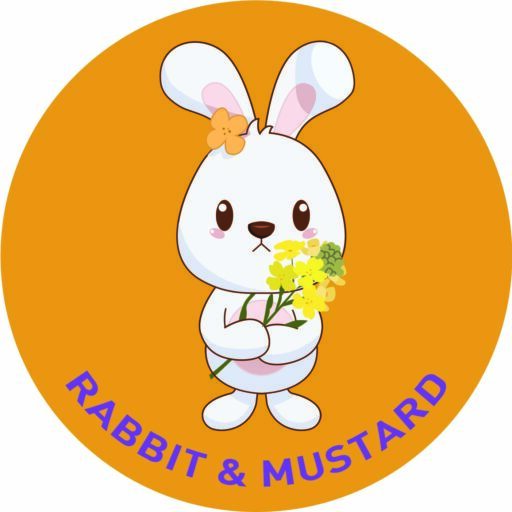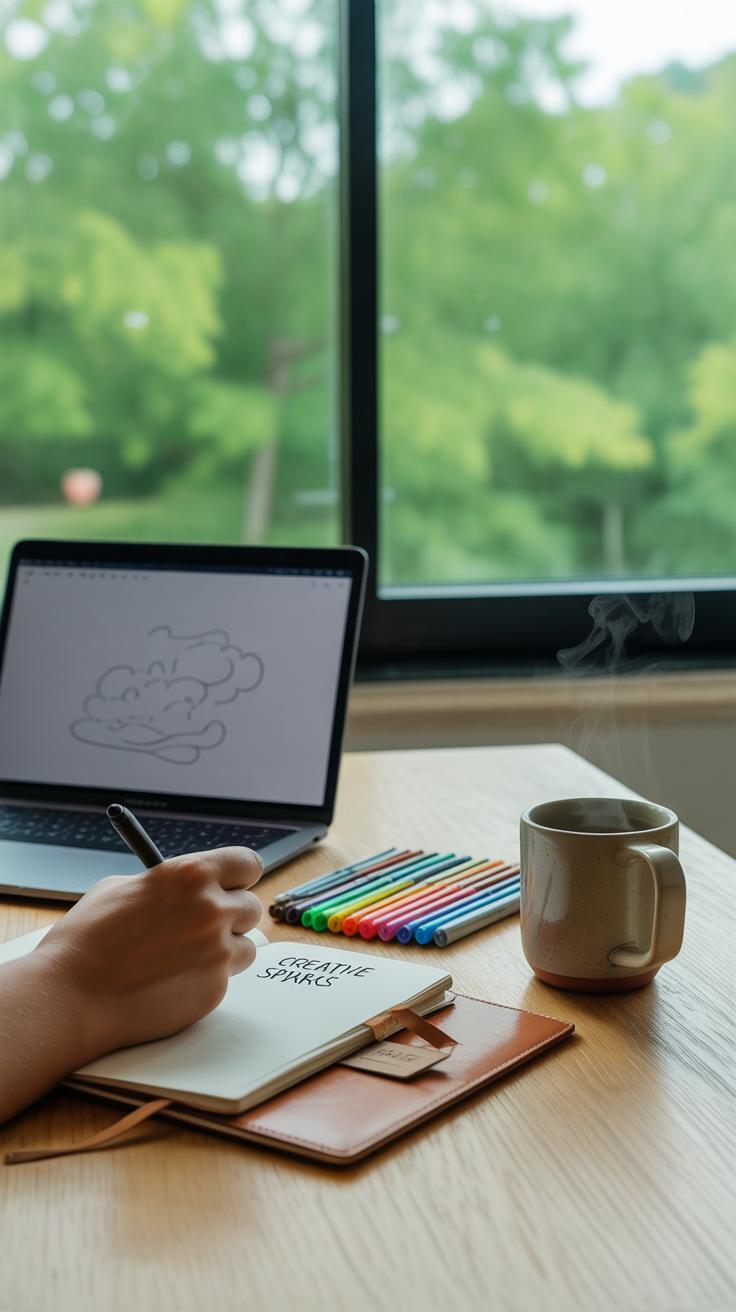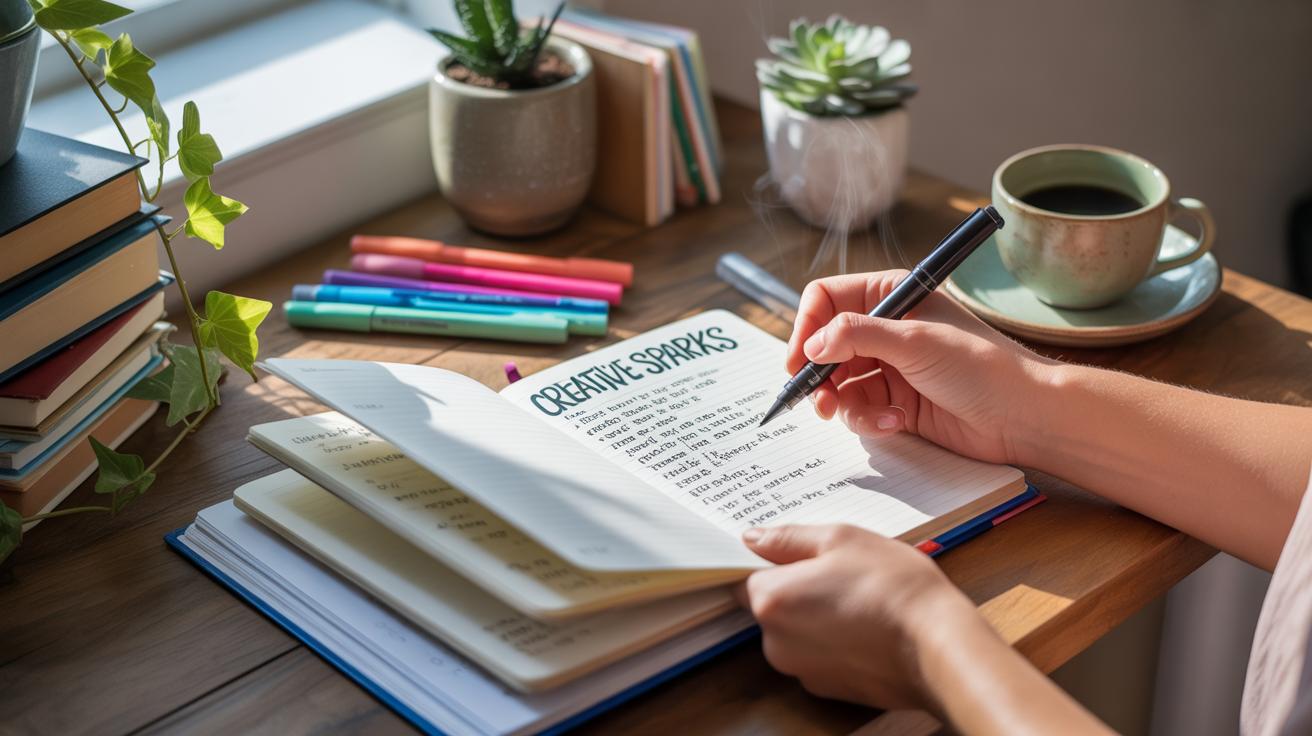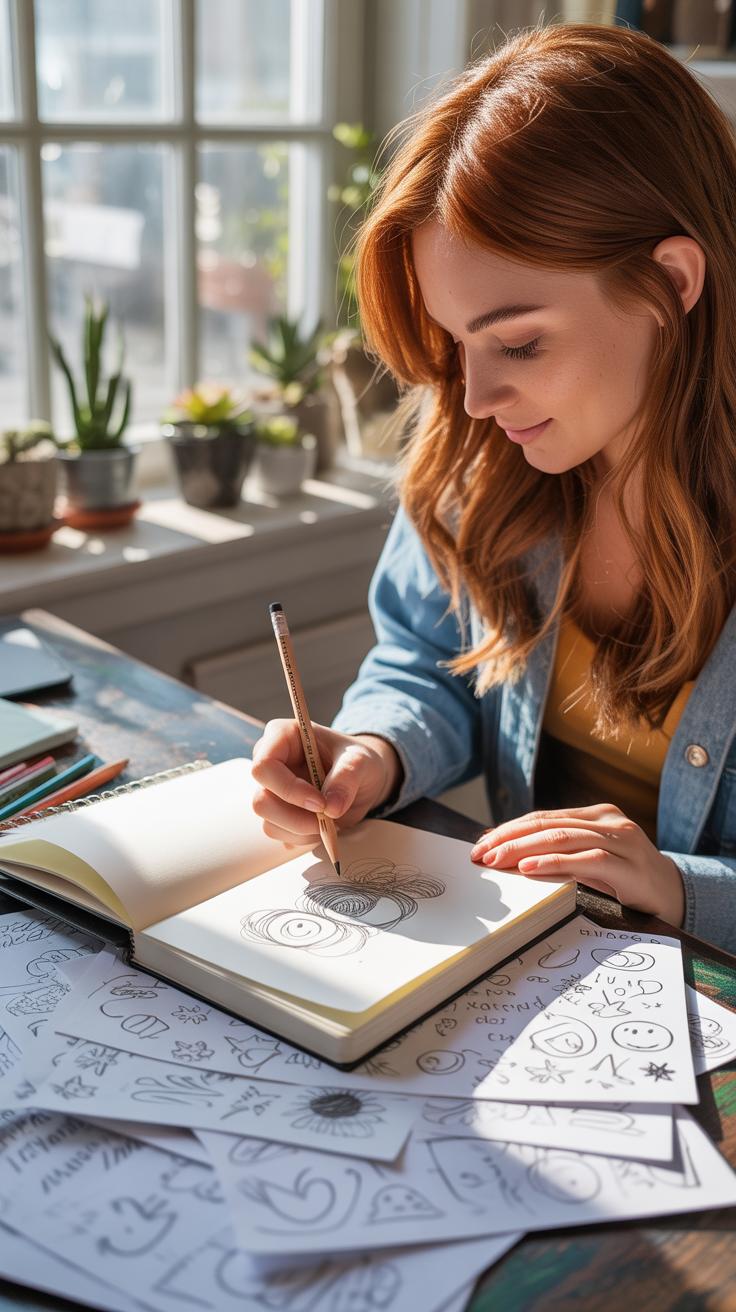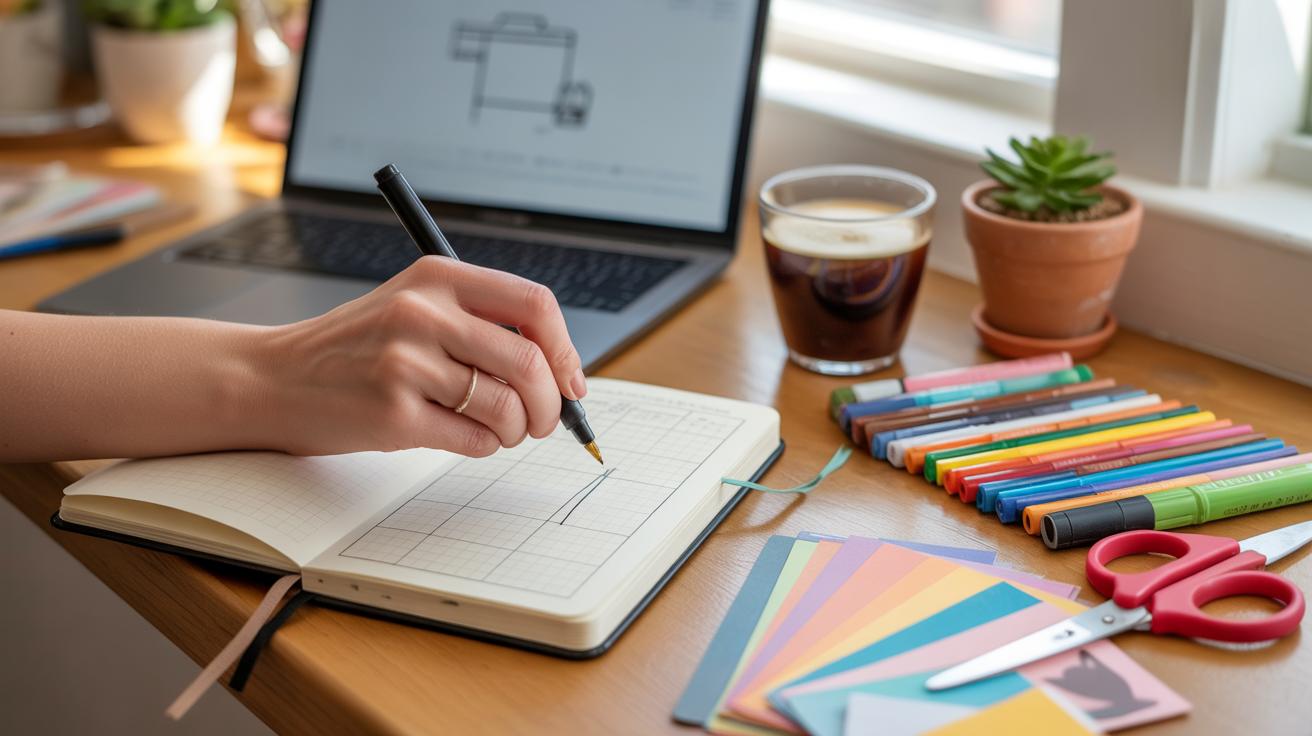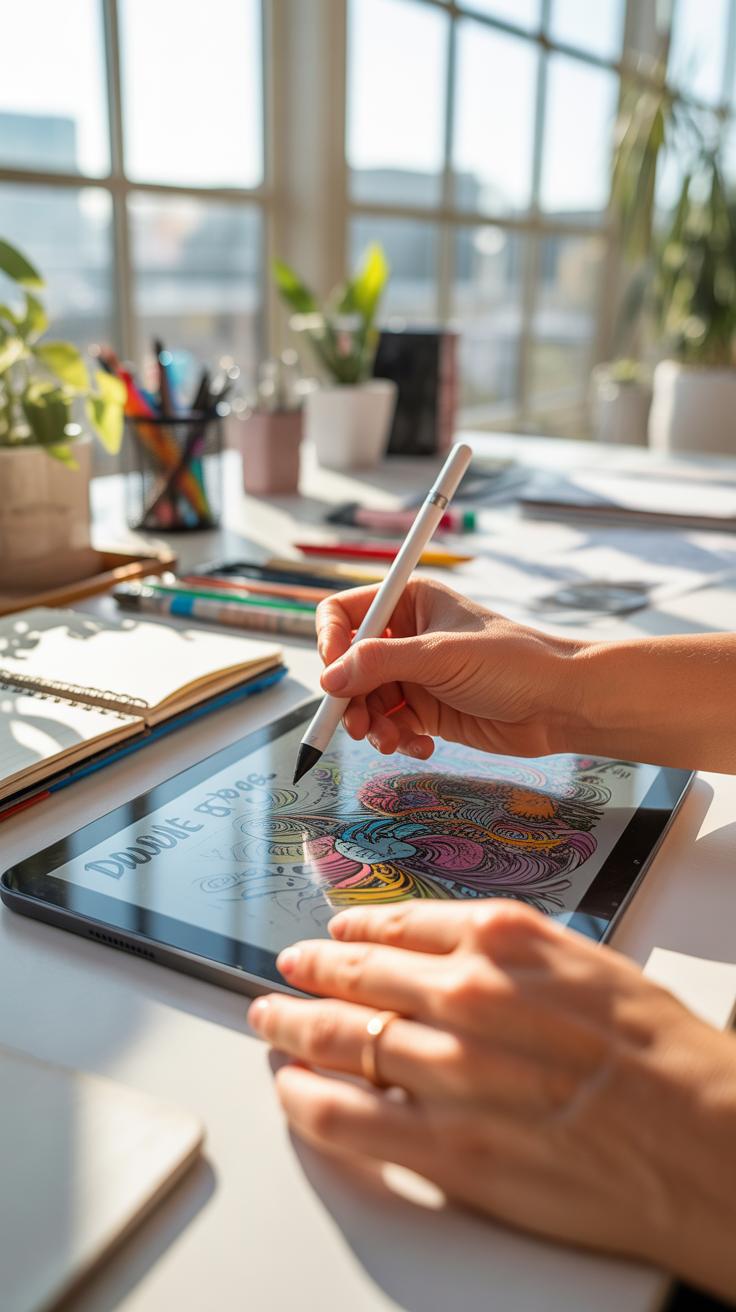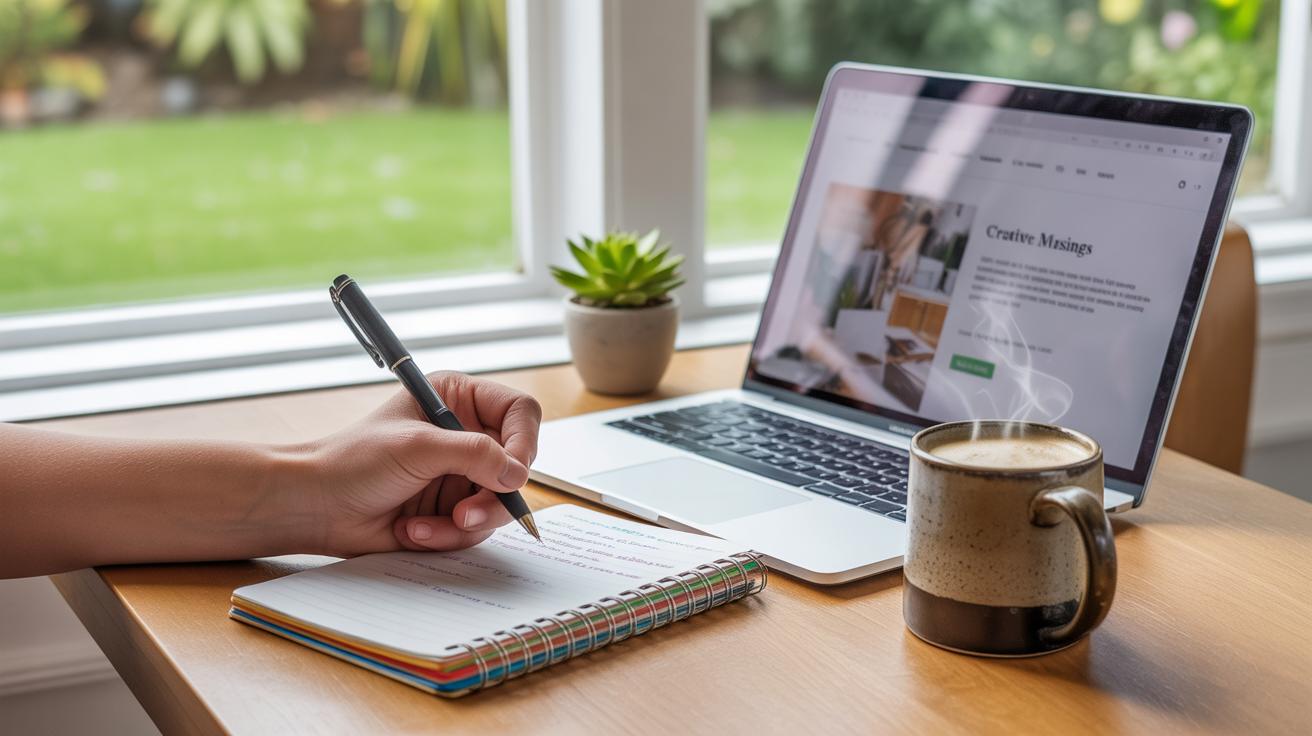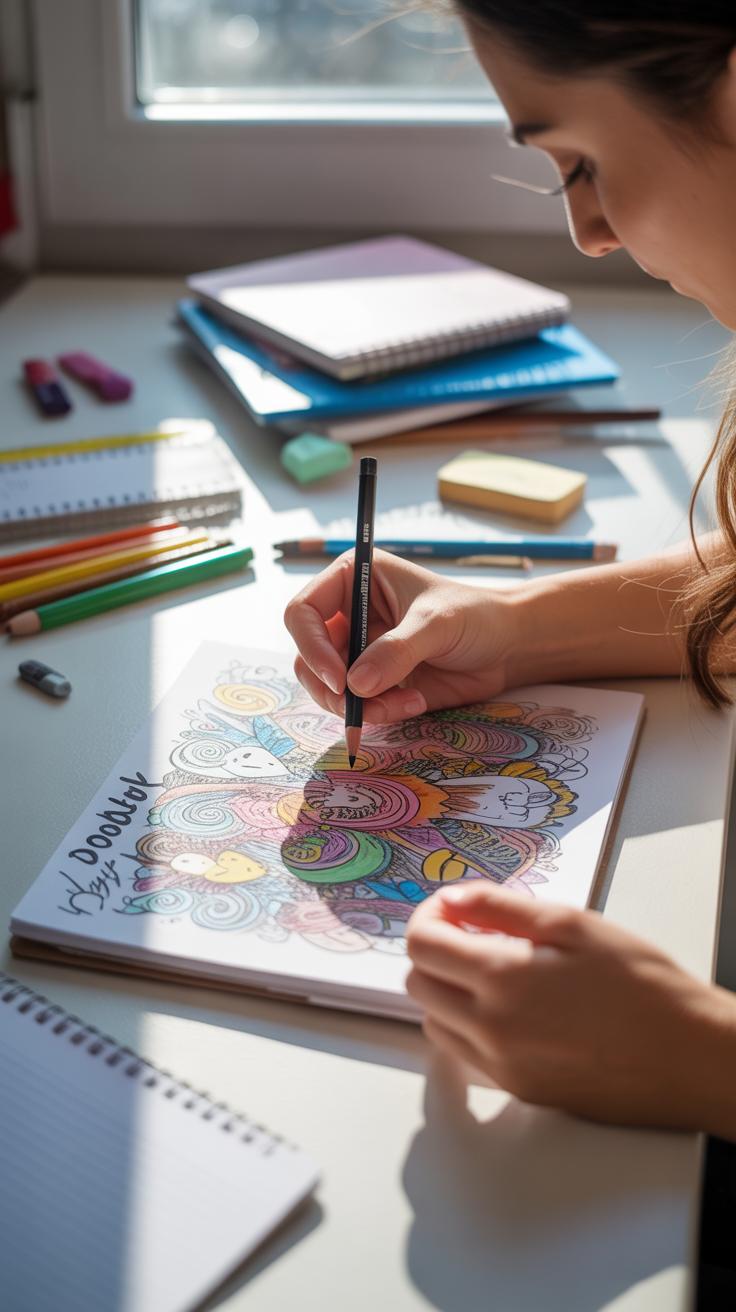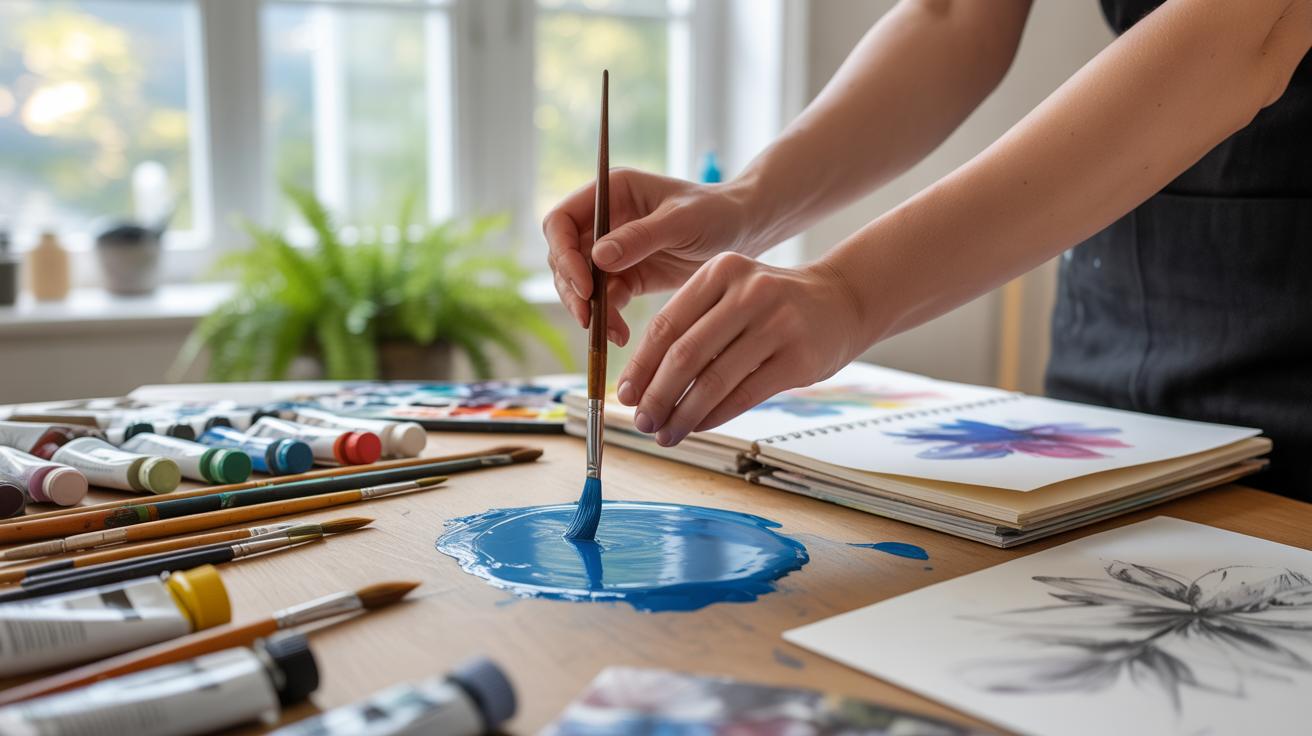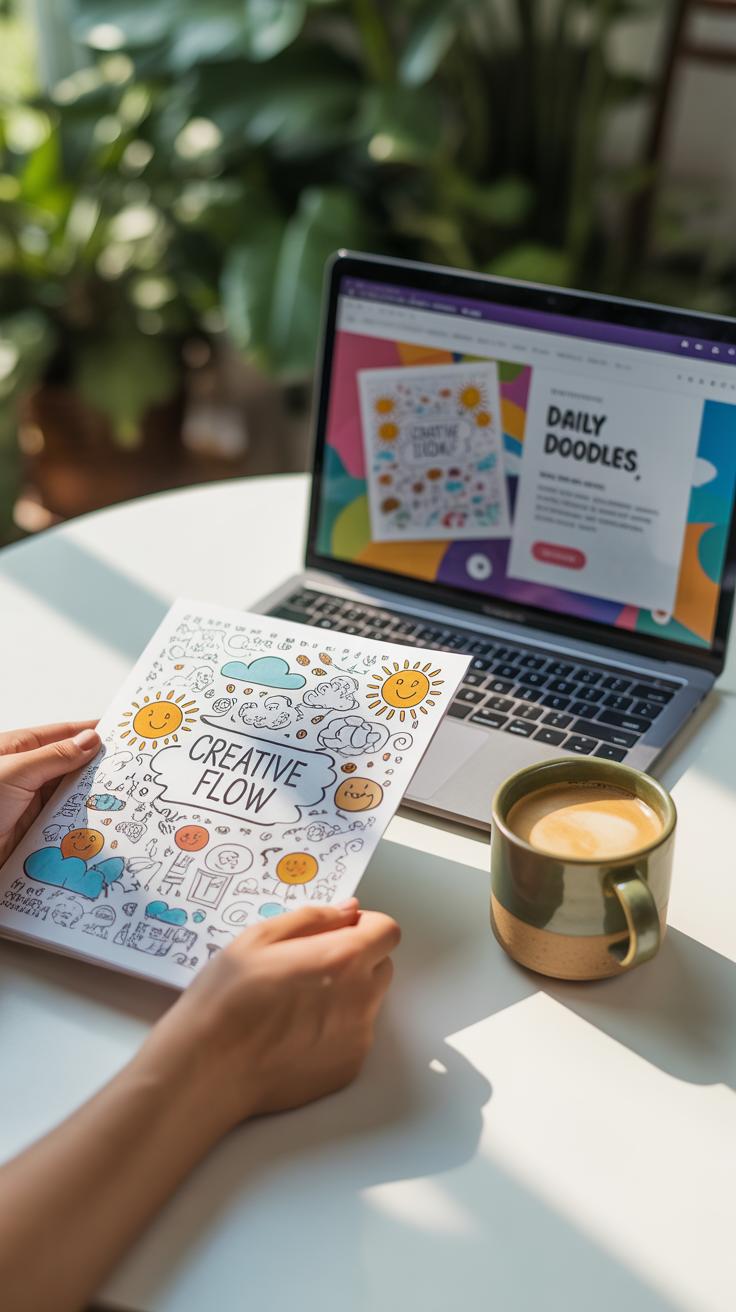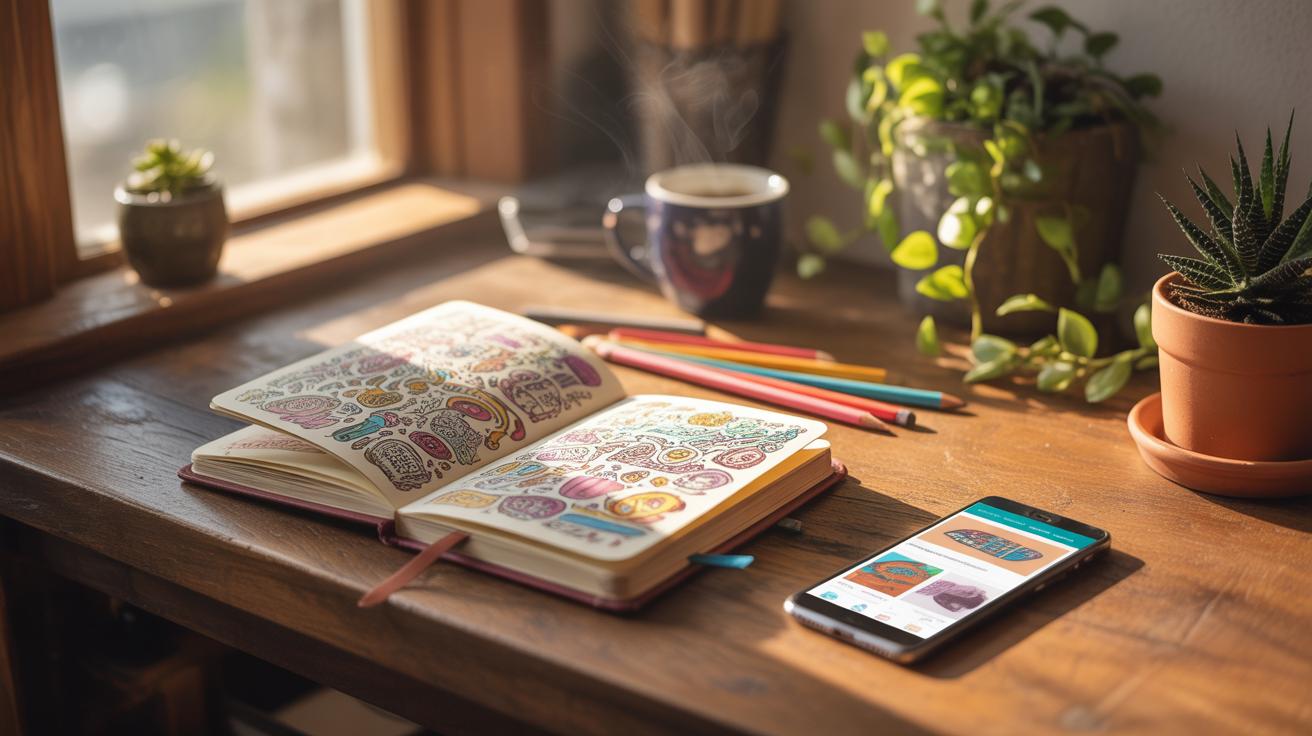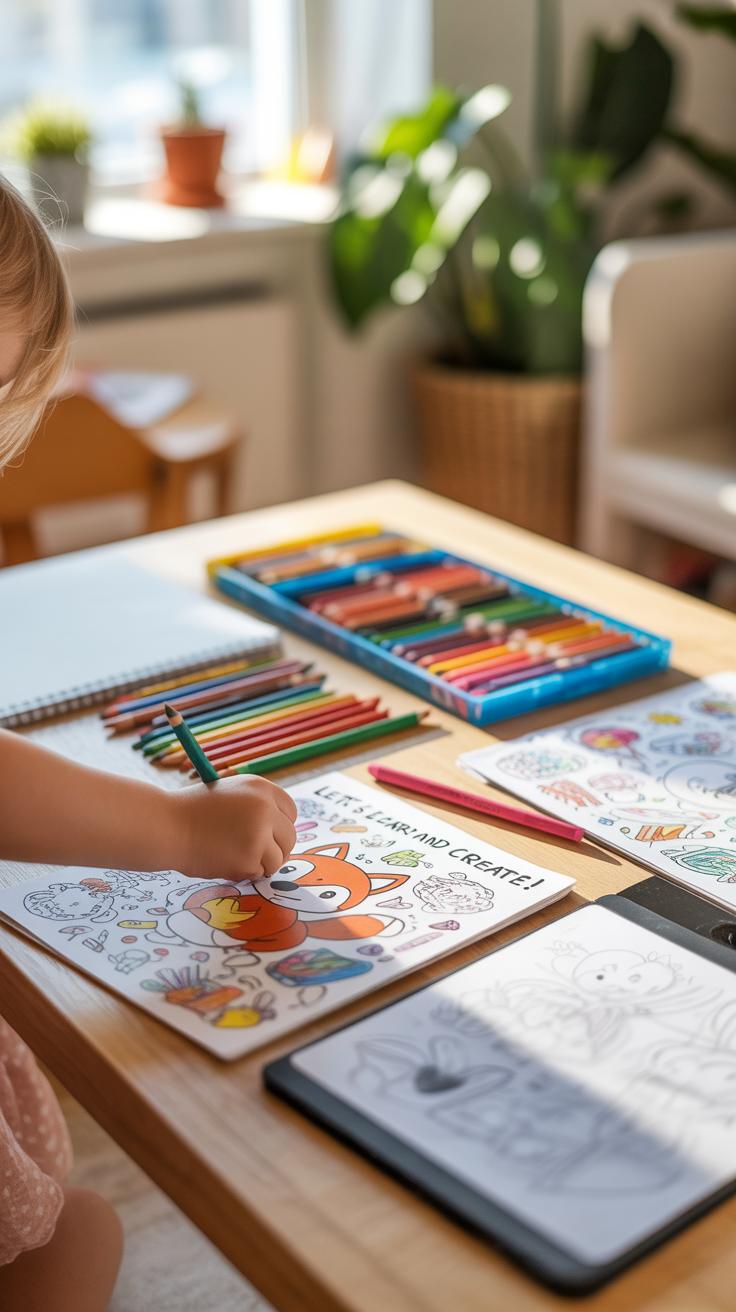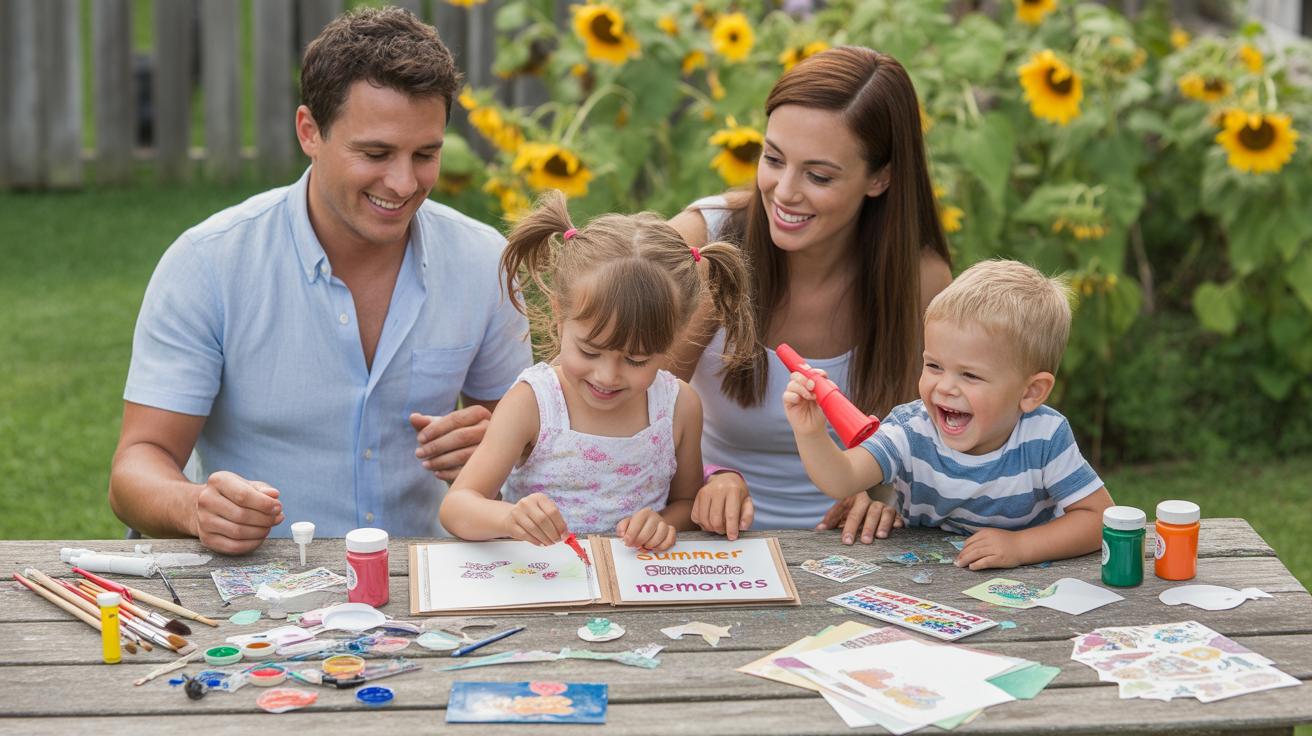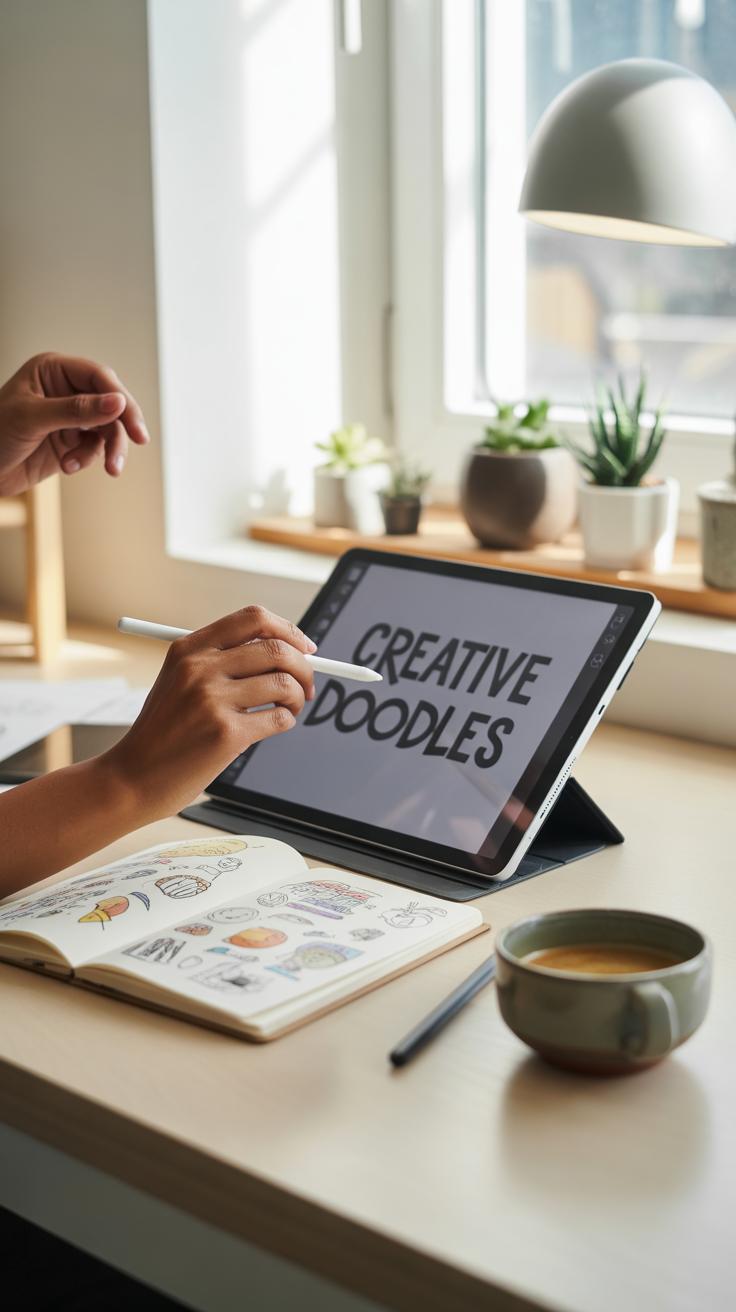
Doodle Pages Spark Your Imagination and Boost Your Creativity
Introduction
Doodle pages are an effective way to engage your imagination and boost your creativity. These pages, filled with simple or complex sketches, can be a tool for expressing your thoughts and ideas visually. They provide a break from structured thinking and allow your mind to wander freely, leading to new insights and creative ideas. This article explores how you can use doodle pages to enhance your creativity and imagination.
You will learn about different ways doodle pages can inspire creativity and the benefits they offer. By understanding how doodle pages work, you can make better use of them to solve problems, generate ideas, and enjoy a creative activity that anyone can do. Let’s dive in and discover how doodle pages can be your new creative companion.
What Are Doodle Pages
Doodle pages are simply pages where you can freely draw, sketch, or jot down any spontaneous ideas without worrying about structure or precision. Think of them as a playground for your thoughts, a space where your hand moves freely, and your brain follows without strict rules. People often use doodle pages during meetings, while thinking through problems, or when they just need a break from focused work.
Why do so many turn to doodle pages? Well, they let you express ideas visually and verbally at the same time. If you’ve ever tried to think by writing only, you might’ve noticed that drawing or sketching can sometimes unlock new angles. Doodle pages provide a way to keep your mind wandering and connecting dots in ways that rigid note-taking rarely allows.
History of Doodling
Doodling isn’t new. Humans have been making casual marks on surfaces for centuries, maybe even millennia. From ancient cave etchings to marginal scribbles in medieval manuscripts, people have always doodled—sometimes unknowingly—as they thought or passed time. Early doodles might have been simple shapes, repeated patterns, or rough animal sketches. These were rarely “art” in the strict sense but served as outlets for thought or boredom.
Interestingly, these early marks show that doodling was often a companion to deeper thinking. It’s like people needed to keep their hands busy so their minds could keep moving. Even today, this urge hasn’t faded, which says something about its persistent role in creativity.
Common Doodle Page Formats
Doodle pages come in different formats—each offering a unique environment for drawing or note-taking:
- Blank pages: Great for freeform sketches and unrestricted creativity. No lines or grids guide your marks, so it’s all spontaneous.
- Grid paper: Useful when you want more control—like designing patterns, charts, or geometric shapes. The grid helps keep things organized without restricting invention.
- Lined paper: Often favored for a mix of notes and quick sketches. The lines offer guidance for words but leave some room around them to doodle.
Choosing a format depends on your personal style or what you want from your creative session. For example, if you feel stuck in structured thinking, a blank page might free you up. Meanwhile, grids might appeal if you’re more analytical or want to combine numbers and visuals. It’s worth experimenting to see which suits you best.
How Doodle Pages Boost Creativity
When you open a doodle page, you give your mind permission to wander. This wandering isn’t just daydreaming—it’s a way for your brain to make new connections. Your thoughts can drift freely, shifting from one idea to another without pressure or strict direction. This freedom sparks creativity because it encourages thinking outside of usual patterns.
Doodling offers mental benefits beyond just distraction. It can help improve focus during long meetings or lectures by keeping your brain engaged. Some studies even suggest that doodling aids memory recall, which might be why you sometimes remember things better after doodling while listening.
Engaging Both Brain Hemispheres
Doodling activates areas in both the left and right sides of the brain. The left hemisphere tends to handle logic and language, while the right side leans towards imagination and spatial awareness. When you doodle, these two halves work together, blending analytical thinking with creative expression.
This combined brain activity supports creative thinking and learning. It can help you see problems from multiple angles, which is useful whether you’re solving practical issues or exploring artistic ideas. I’ve noticed that doodling while planning often helps me come up with solutions I wouldn’t get otherwise, though sometimes it just ends up as random squiggles—still, those squiggles seem to loosen things up mentally.
Breaking Creative Blocks
Creative blocks can be frustrating. Doodling gives you a way to bypass them because it doesn’t require a polished result. You can draw without judgment—no right or wrong. This low-pressure exploration lets you try ideas visually, even when words fail.
Many people I know say that when they’re stuck, putting pen to paper without a plan helps unlock something. The act of sketching random shapes or patterns can lead to unexpected insights. So instead of forcing ideas, you give your mind permission to play, and often, that’s enough to break through the block.
Uses of Doodle Pages in Daily Life
Doodle pages slip easily into many parts of your day. You might think they’re just for fun, but they actually serve real purposes.
For example, when you’re jotting down notes, doodles can help you capture ideas visually. They make facts stick better, especially if words alone start feeling dull. In brainstorming sessions, doodle pages let your mind roam freely; random sketches can spark connections you wouldn’t expect. And when you just want to relax, doodling acts like a gentle pause—it’s simple, almost meditative, helping clear your head.
Occasionally, I find my doodle pages get messy but somehow that messiness clears mental fog instead of causing more confusion.
Doodle Pages for Students
Students often struggle with focus during lectures. Doodle pages can help here by giving restless hands something to do. It might sound counterintuitive, but small drawings actually keep the mind engaged.
This engagement helps attention, and later, when it’s time to review, the visual cues assist memory. I’ve noticed that linking notes with simple sketches makes recall easier—like a visual anchor amidst paragraphs of text.
Still, not every student might find this method perfect. Some could get distracted by doodling too much, but used wisely, it’s a powerful tool to boost retention and focus.
Doodle Pages for Professionals
For professionals, doodle pages aren’t just child’s play. During brainstorming or meetings, scribbling ideas, shapes, and charts can sketch out concepts faster than words alone.
They help untangle complex projects by mapping thoughts visually. I’ve been in meetings where a quick doodle clarifies a plan better than a line of speech. It breaks the usual flow and encourages fresh thinking.
In project planning, doodle pages can also provide a flexible space to experiment with ideas without pressure—sometimes the messier the page, the clearer the path forward. Of course, it’s not the right fit for every personality, but it complements verbal and written communication well.
Tools to Create Your Doodle Pages
Traditional Drawing Tools
If you’re starting with doodling, simple materials often do the trick. A pencil—sometimes just a regular No. 2—can be surprisingly versatile. It lets you sketch, erase, and start over without fuss. I’ve found that having a few mechanical pencils with different lead hardness adds some variety. It’s a small detail, but it helps when you want lighter or darker lines.
Markers and fine-liner pens come next, especially if you want your doodles to pop. I’m often torn between sharp gel pens and classic felt tips. They each feel different in your hand and affect the final look. And notebooks—there’s plenty to choose from. Some prefer blank pages; others like grids or dots for subtle guidance. I guess the notebook you pick might depend on how “organized” you want your doodling to feel, but really, it’s personal.
Digital Tools and Apps
Digital doodling is a different world but just as accessible. Apps like Procreate and Adobe Fresco are popular mainly for their brushes and layers. They mimic the feel of real drawing without the mess—sometimes that’s a relief. For simpler, more casual doodling, apps like Autodesk SketchBook or even Notes on an iPad work surprisingly well. They have undo buttons, which I appreciate when my hand slips or ideas change mid-doodle.
One useful feature in many apps is pressure sensitivity, especially if you use a stylus like the Apple Pencil. It lets your lines vary naturally, similar to a pen on paper. That said, while these digital tools can be powerful, I sometimes miss the tactile feel of pen and paper. Still, mixing both traditional and digital methods might be the best way to discover your style. Ever thought which you’d lean towards more?
Techniques to Improve Your Doodling
Starting with simple shapes can really ease you into doodling. Circles, squares, triangles—these basic forms act like building blocks for more complex designs. When I first began doodling, breaking down images into these shapes made the whole process less intimidating. You might find that this approach quietly boosts your confidence as you connect shapes to create new patterns. It’s not about perfect lines but exploring how forms interact.
Regular practice matters. Even a few minutes a day can sharpen your doodling reflexes. Don’t worry if your early sketches feel awkward; progress is often subtle and inconsistent. Sometimes, doodling feels like a bit of a struggle, yet that struggle invites discovery.
Mixing words with images also changes the game. Writing a phrase or random thoughts alongside sketches can help your brain link concepts visually and verbally. When you catch your ideas on paper this way, it’s easier to make sense of fuzzy notions. For example, I jot a quick word next to a doodle and suddenly the idea feels more alive—like it has room to grow.
Try combining these simple techniques:
- Begin with circles or lines, then add details.
- Repeat patterns to build rhythm and confidence.
- Sketch a word and draw whatever that word evokes.
- Set a timer for short sessions to keep momentum.
Have you noticed how some drawings start to tell a story when they include text? Experiment and see what happens when your images and words mingle.
Inspiring Examples of Doodle Pages
Famous Doodlers
Many well-known figures have turned doodling into more than just idle scribbles. Take Leonardo da Vinci, for example. His notebooks are full of random sketches and doodles that sparked ideas, sometimes leading to entire projects or inventions. Doodling helped him think visually and connect seemingly unrelated concepts.
Another notable doodler is Pablo Picasso. He often sketched casually, letting simple lines evolve into striking images. His loose doodles weren’t just warm-ups; they showed his process and encouraged spontaneity. It’s interesting how these masters didn’t stress over perfection but used doodles to unlock creativity.
You might find it surprising, but even Bill Gates doodled ideas during meetings. This brief, unfocused act was a way for him to concentrate, showing that doodling isn’t just for artists—it’s a tool for clearer thinking.
Everyday Doodle Inspirations
On the other hand, think about everyday people who’ve discovered that doodling can boost creativity and focus. One teacher I heard about started doodling on her lesson plans to reduce stress and ended up generating fresh lesson ideas. Her doodles unlocked new perspectives simply because she wasn’t trying to be perfect.
Or consider an accountant who uses small, repetitive doodles during breaks to reset his mind. He claims these patterns give him clarity and keep boredom at bay. It’s not just decoration—it’s a practical tool to return to work refreshed.
What makes these examples motivating, I think, is the low barrier to entry. You don’t need fancy tools or talent to start. Just a pen and some paper. If someone like da Vinci or an accountant finds value in doodling, why wouldn’t you? It’s less about what your doodles look like and more about how they affect your thinking. Maybe that’s the real inspiration for beginners—doodling works, whether you plan to hang it in a gallery or keep it private.
How to Incorporate Doodle Pages Regularly
Setting Aside Time
Making doodling a daily habit might feel tricky at first, but carving out just five to ten minutes can make a big difference. You don’t need hours—just a little slot each day where your hand moves freely and your mind can wander.
Try to pick a consistent time. Maybe right after breakfast or during a mid-afternoon break. It helps if you think of it as something small but meaningful, almost like a mental reset. I’ve found myself skipping days occasionally, but returning always felt refreshing, like waking creativity you didn’t know had dozed off.
Even if some days the doodles are simple or messy, the habit counts. The routine nudges your brain to stay curious. The quiet moments spent with a pen can unlock unexpected ideas later.
Using Doodle Pages in Meetings
Doodling during meetings might seem like a distraction, but oddly, it can enhance your focus. When your mind starts drifting or the discussion lags, sketching small shapes or patterns keeps your brain engaged. This often leads to new ideas or connections that you wouldn’t notice otherwise.
Some people worry it looks unprofessional, but many leaders have embraced the practice. Doodle pages can act as informal note-taking that captures thoughts visually rather than just in words. That visual aspect can help you remember points better afterward.
If you’re nervous about doodling openly, try it in private first until you feel more comfortable. Over time, you might find your doodles spark fresh perspectives during brainstorming or problem-solving discussions.
Future of Doodle Pages Predicting Their Evolution with Technology and Creativity
Digital and Interactive Doodling
The rise of digital doodling tools has changed how we approach simple sketches. Apps now let you draw, erase, and layer with just a tap—sometimes adding sounds or animations. These interactive elements make creativity more playful, almost like doodling comes alive right before your eyes. I’ve noticed that this kind of engagement encourages people to keep experimenting without worrying about mistakes. You can undo instantly or switch colors seamlessly, which wasn’t as easy with pen and paper.
Plus, some tools include AI suggestions or adaptive brushes that react to your style. It feels like the software is almost collaborating with you, nudging your imagination in new directions. Will this mean doodling will become more of a tech-driven experience than a casual pastime? Maybe—though there’s also something about the tactile, imperfect charm of paper doodles that digital versions haven’t quite captured yet.
Educational and Professional Use
Doodle pages aren’t just for fun anymore. They’re slowly gaining traction in classrooms and offices too. Imagine students sketching concepts during lessons on tablets with built-in prompts or professionals quickly mapping out ideas on interactive whiteboards that save and share their doodles automatically. Emerging tools could help turn these rough drawings into organized mind maps or even instant prototypes.
That said, it seems like not everyone is ready to buy into this shift just yet. Some educators and workers still see doodling as a distraction instead of a learning or brainstorming tool. I think as these tools become more integrated and prove their value, attitudes might change. What’s exciting is that doodle pages could soon play a key role in understanding, problem-solving, and visual thinking—breaking the usual boundaries of note-taking or presentations.
So, how will you see doodle pages in your own workspace or school? Will digital options replace your paper notebooks, or will they exist side by side? It’s an open question—one that’s worth exploring as these creative tools continue to grow.
Conclusions
Doodle pages offer a simple yet powerful way to tap into your creativity. They help you think differently by encouraging free-form drawing and note-taking. By using doodle pages regularly, you can unlock new ideas and solutions that might not emerge through traditional thinking methods. They are versatile tools that you can use anywhere and anytime.
Whether you are a student, professional, or someone who enjoys creative hobbies, doodle pages can benefit you. They improve focus, reduce stress, and develop problem-solving skills. Start incorporating doodle pages into your routine and watch as your creativity and imagination grow stronger with each sketch and drawing.
